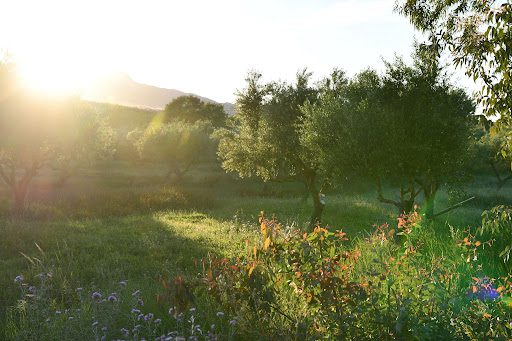Did you know that Pecan trees usually range in height from 70 to 100 feet, but some trees grow as tall as 150 feet or higher? Even more than that, native pecan trees – those over 150 years old – have trunks more than three feet in diameter. If you have been interested in purchasing a Georgia Pecan Tree or are looking to improve the health of your current trees, then you’ve come to the right place.
With thousands of mature pecan trees around the US, many groupings of trees can become sparse and produce erratically. While typically, there isn’t a singular reason as to why your pecan tree is failing to produce a crop or poor quality nuts— there are a few things you can keep an eye on. If you’re in need of more specific information, contact Georgia Pecan Nursery today.
Here is our Georgia Pecan Tree Health Guide:
- Tree Types
- Soil Options
- How to Properly Fertilize
- Pollination Efforts
- Diseased Trees
Tree Types
Knowing the species of your pecan tree will prove to be crucial, as this will determine what specific cultivar you can plant. Accordingly, pecan plants can vary depending on their tree type, their nut quality, and their resistance to disease.
An unsprayed variety such as Schely, for example, will rarely produce a good crop because of its high susceptibility to pecan scab, a fungus disease. The following pecan tree varieties are currently recommended for home planting, including Elliott, Jenkins, McMillan, and Syrup Hill. In general, pecan tree cultivars of this type are not typically seriously damaged by pecan scab, ensuring a bountiful harvest for you this upcoming season.
Soil Options
Did you know pecan trees prefer sandy loam soils and well-drained subsoils? Perhaps you should reevaluate your soil choices if your trees are not growing well or producing a good nut harvest. If a heavy clay or poorly drained soil is used, as well as deep or deep-watered sands, pecan trees will not succeed without intensive irrigation and fertilization.
Planting your Georgia pecan trees in preferred types of soil will ultimately determine whether or not your trees grow well. Choose sandy loam soil with well-draining subsoil if you want happy, healthy, and productive flowering pecan trees.
How to Properly Fertilize
Having a healthy foliage and good pecan production depend on proper fertilization of your Georgia pecan trees. Lime deficiency, nitrogen fertilizer deficiency, and zinc deficiency are some of the common limiting factors in full, ripe pecan production. Make sure that you fertilize according to the soil and leaf sample recommendations for your area.
If your Georgia pecan trees are larger, fertilize them in March. If your trees are young, fertilize them in March with 13-13-13, lime, and zinc. Apply half of the ammonium nitrate in April, and the other half in June. Fertilizer should be applied in a circle twice the diameter of the tree’s branches. With a regular, fertilizer application plan, your pecan trees will thrive.
Pollination Efforts
It is typically not possible to pollinate a single tree, which is why Georgia pecan trees should be planted in groups rather than alone. Pollen shed by most varieties of pecan trees, especially when planted alone, can arrive either too early or too late to pollinate female flowers of the same species.
Planting a minimum of two trees will help to alleviate this problem. A pollinator tree is not usually necessary if a number of seedling trees of several types are growing nearby. Poor pollination can also be caused by wet weather during April and May, especially if you have multiple trees. Pollen can often be washed away by rain, so poor drainage will also affect the health of your tree.
To ensure a fruitful harvest and a healthy Georgia Pecan Tree, be sure to plant more than one tree and work on soil irrigation.
Diseased Trees
Unsprayed varieties of pecan trees can be heavily damaged by pecan scab, which limits the amount of nuts produced. To reduce disease or pest risks, you may want to consider spraying your trees if they are not already sprayed. It is even possible for trees that are known to be resistant to scab to be infected. Early leaf drop and a reduction in production can also be a result of certain diseases or pest infestations. Several insects can limit the growth of Georgia pecan trees. Among them are the weevils, hickory shuckworm, and aphids. Insects and diseases can be controlled by removing and destroying fallen leaves, nuts, and twigs. Pesticide spraying may not be feasible for all growers, but spray recommendations for controlling pecan pests can be obtained from your county’s Cooperative Extension office.
Be Mindful of Orchard Overcrowding
Pecan trees can still produce or pollinate without friend trees, but be mindful of over or under crowding orchards. Pecan trees must have good exposure to sunlight to produce good crops— and when limbs from too many trees begin to overlap neighboring trees, all of your pecan trees are at risk of health issues. Be sure to remove the least desirable trees and limbs to prevent overcrowding and maintain healthy trees.
With over 45 years experience in the pecan growing industry and pecan tree sales, Georgia Pecan Nursery is happy to provide our customers with quality nursery stock of pecan trees. We are also available to provide educational information on select pecan varieties, planting pecan trees, maintaining pecan trees, designing orchards, and will discuss results with growers so they can know what to expect. Whether you are a beginner or seasoned grower, we look forward to offering you pecan trees for sale, as well as helping you achieve your goals.
Are you ready to purchase a pecan tree? Visit Georgia Pecan Tree Nursery to find your new pecan tree today.

